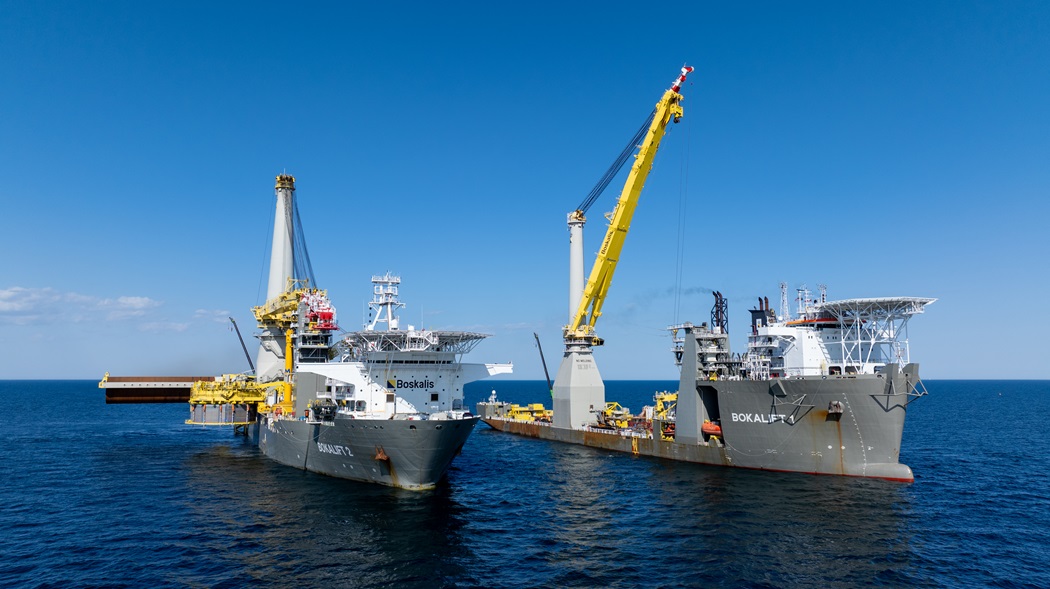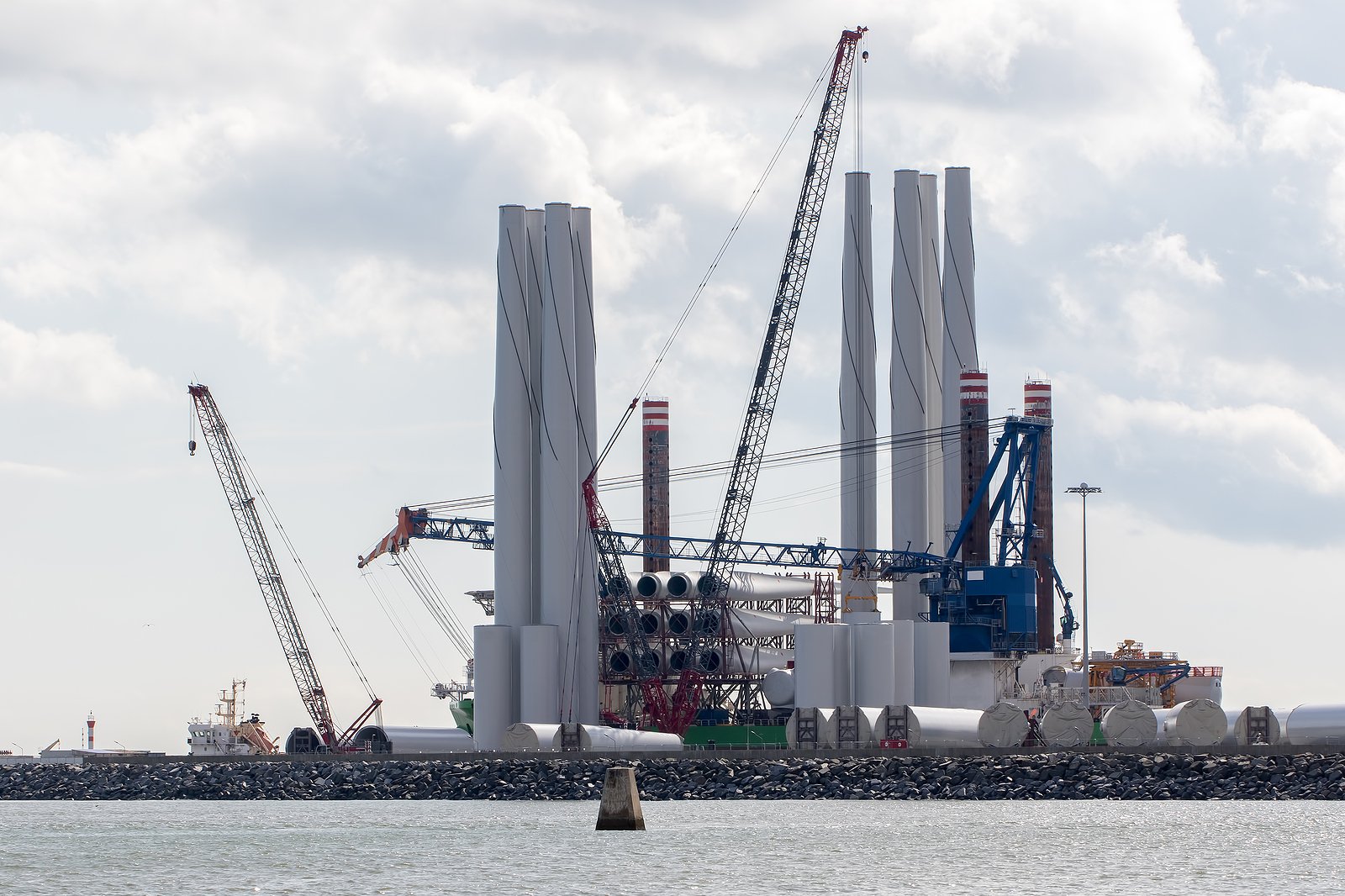The Economic Reality Of Offshore Wind: Are Projects Financially Viable?

Table of Contents
High Initial Investment Costs and Capital Expenditure
Offshore wind projects demand substantial upfront capital investment. Understanding this crucial aspect is vital for assessing their Offshore Wind Economic Viability.
The Cost Breakdown
The initial capital expenditure (CAPEX) for offshore wind farms is considerable, encompassing several key components:
- Turbine and foundation costs: These constitute a significant portion of the overall investment, varying based on turbine size, water depth, and foundation type (monopiles, jackets, floating platforms).
- Installation and commissioning expenses: The complex process of installing turbines in challenging offshore environments incurs substantial costs, including specialized vessels, heavy-lift equipment, and skilled labor.
- Grid connection infrastructure investments: Connecting offshore wind farms to the onshore electricity grid requires significant infrastructure development, including subsea cables, onshore substations, and potentially upgrades to the transmission network.
- Site surveys and environmental impact assessments: Thorough environmental studies and regulatory approvals are crucial and add to the pre-construction costs.
Financing Challenges
Securing financing for such large-scale projects presents unique challenges:
-
High capital requirements: The sheer scale of investment necessitates securing substantial funding from multiple sources, including private equity, institutional investors, and government-backed financing schemes.
-
Long payback periods: Offshore wind projects typically have long lead times before generating significant revenue, stretching payback periods to several years.
-
Reliance on government subsidies and tax incentives: Government support, such as tax credits, feed-in tariffs, and contracts for difference (CfDs), often plays a crucial role in making projects financially viable.
-
Risk mitigation strategies: Investors and developers employ various risk mitigation strategies, including insurance, hedging, and power purchase agreements (PPAs), to manage financial uncertainties.
-
Examples: The Hornsea Wind Farm (UK) and the Ørsted-developed projects in the US represent multi-billion dollar investments, illustrating the scale of capital expenditure involved.
Operational Expenses and Long-Term Maintenance
While initial investment is substantial, ongoing operational expenses (OPEX) are also a key factor influencing Offshore Wind Economic Viability.
Ongoing Operational Costs
Maintaining and operating an offshore wind farm involves recurring costs:
- Routine maintenance and repairs: Regular inspections, component replacements, and repairs are crucial for ensuring optimal performance and minimizing downtime.
- Inspections and monitoring: Advanced monitoring systems and regular inspections are needed to detect potential issues and prevent major failures.
- Personnel costs: Employing skilled technicians and crew for maintenance, repair, and operational support represents a considerable ongoing cost.
- Insurance premiums: Comprehensive insurance coverage is essential to protect against potential damage or loss caused by storms, equipment failures, or other unforeseen events.
Technological Advancements and Cost Reduction
Technological innovations are contributing to lower OPEX:
-
Improved turbine designs: More efficient and durable turbine designs are extending operational lifespans and reducing maintenance needs.
-
Advanced monitoring and predictive maintenance: Remote monitoring and predictive maintenance technologies allow for proactive interventions, reducing downtime and repair costs.
-
Automated maintenance systems: Robotics and automation are being increasingly utilized for tasks like inspection and minor repairs, reducing personnel costs.
-
Examples: The use of advanced sensors, drones, and AI-powered predictive maintenance systems is proving to be highly effective in minimizing operational costs.
Revenue Generation and Energy Pricing
Revenue generation is paramount to the Offshore Wind Economic Viability.
Power Purchase Agreements (PPAs)
PPAs are long-term contracts between wind farm operators and electricity buyers, guaranteeing a stream of revenue:
- PPA pricing: PPA pricing depends on factors like the prevailing electricity market price, the project's capacity factor, and the length of the contract.
- Risk allocation: PPAs allocate risks between the wind farm operator and the electricity buyer, influencing the overall financial viability of the project.
Government Subsidies and Renewable Energy Credits (RECs)
Government support significantly impacts profitability:
- Tax credits and feed-in tariffs: These financial incentives reduce the initial investment costs and enhance the long-term profitability of offshore wind projects.
- Carbon pricing mechanisms: Policies that put a price on carbon emissions further incentivize renewable energy development, boosting the financial attractiveness of offshore wind.
Electricity Market Volatility and Price Fluctuations
Fluctuations in electricity prices can impact project profitability:
-
Price hedging strategies: Wind farm operators often use financial instruments like hedging to mitigate the risk of price volatility.
-
Market forecasting and risk assessment: Accurate forecasting of electricity market prices is crucial for effective financial planning and risk management.
-
Examples: The impact of government policies like the UK's Contracts for Difference (CfDs) or the US's Investment Tax Credit (ITC) significantly influence project economics.
Environmental Considerations and Regulatory Hurdles
Environmental aspects and regulations influence the overall Offshore Wind Economic Viability.
Environmental Impact Assessments and Permitting
Environmental impact assessments (EIAs) are mandatory, involving substantial costs and time delays:
- Regulatory approvals: Obtaining all necessary permits and approvals from regulatory bodies can be a lengthy and complex process.
- Environmental mitigation measures: Mitigating potential environmental impacts, such as bird and bat mortality, adds to the project's cost.
Mitigation Measures and Environmental Protection Costs
Minimizing environmental impacts necessitates additional investment:
- Bird and bat deterrent technologies: Employing technologies to reduce bird and bat collisions adds to operational costs.
- Underwater noise mitigation: Minimizing noise pollution during construction and operation adds further costs.
Regulatory Uncertainty and Policy Changes
Regulatory uncertainty and changes in government policy impact profitability:
-
Policy stability: Consistent and supportive government policies create a more stable investment environment, facilitating project financing.
-
Regulatory changes: Unexpected changes in regulations can significantly impact project timelines and costs.
-
Examples: The permitting process for offshore wind projects in the US, with its various federal and state regulations, can be lengthy and complex, adding considerable cost.
Conclusion
The financial viability of offshore wind projects is complex, influenced by high initial investment costs, ongoing operational expenses, revenue generation mechanisms, and environmental considerations. While significant upfront capital is required and operational costs must be carefully managed, the potential for long-term profitability is strong, particularly with government support and technological advancements reducing operational expenditure and boosting efficiency. The influence of factors like location, technology, and consistent, supportive policy are crucial for success. Based on current trends and technological advancements, offshore wind projects are becoming increasingly financially viable, but careful planning, risk management, and securing appropriate financing remain paramount. To stay informed on the evolving economic landscape of offshore wind, continue your research by exploring the latest reports from IRENA and WindEurope and stay updated on the latest developments in offshore wind economic viability.

Featured Posts
-
 Lv
May 04, 2025
Lv
May 04, 2025 -
 Expensive Offshore Wind Farms Why Energy Firms Are Turning Away
May 04, 2025
Expensive Offshore Wind Farms Why Energy Firms Are Turning Away
May 04, 2025 -
 Buduschee Frantsii Referendum O Reformakh Plany Pravitelstva
May 04, 2025
Buduschee Frantsii Referendum O Reformakh Plany Pravitelstva
May 04, 2025 -
 Nba Fans Weigh In Russell Westbrooks Impact On The Nuggets Warriors Matchup
May 04, 2025
Nba Fans Weigh In Russell Westbrooks Impact On The Nuggets Warriors Matchup
May 04, 2025 -
 Nba World Reacts Russell Westbrooks Vintage Performance In Nuggets Warriors Game
May 04, 2025
Nba World Reacts Russell Westbrooks Vintage Performance In Nuggets Warriors Game
May 04, 2025
